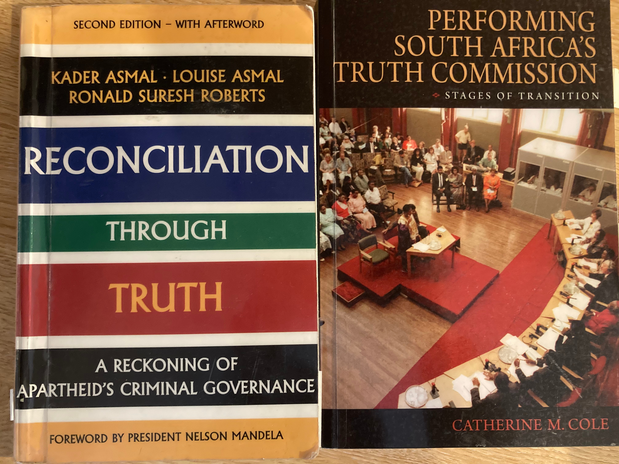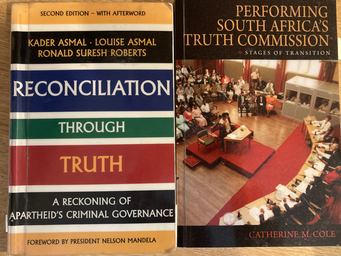‘Our bodies have been used as a terrain of struggle by men.’ – Tenjiwe Mtintso, Chair of the Commission on Gender Equality, 28 July 1997.
My History dissertation was an analysis of sixteen women’s oral testimonies about their experiences living under apartheid during the Special Hearing on Women in the South African Truth and Reconciliation Commission (TRC) in July 1997.
Truth Commissions are non-judicial hearings that take place after armed conflicts or repressive regimes in order to investigate human rights violations and help countries peacefully transition from autocratic regimes to democracies. They became popular practice in the 1980s and 1990s and have famously taken place in countries such as Sierra Leone, Guatemala and Uganda. The post-apartheid South African Truth Commission is one of the most famous and well-studied examples, and it took place over two years in 1996 and 1997. It was also the first Truth Commission to ever formally incorporate gender into its policy framework.
However, Truth Commissions are always inherently shaped by their intention to help the nation transition from a period of national conflict to a functioning democracy. They are therefore invested in creating a national consensus, or ‘collective memory’, and simultaneously legitimising the new democratic State.
My dissertation critically analyses these women’s testimonies in order to understand how the Commission presented women’s gendered experiences. I argue that the Commission presented women’s experiences in a problematically narrow light both due to contemporary South African gender politics and in order to further their nation-building agenda.
Specifically, I argue that the Commission emphasised and platformed women’s voices when testimonies discussed experiences that had been specifically delineated by their female sexuality. This meant that women’s testimonies about sexual assault, fertility and motherhood – all related to the female sexual body – were platformed and emphasised. On the other hand, however, the Commission silenced and omitted women’s voices about experiences that were not characterised by female sexuality. This meant that women’s everyday experiences, such as working life, economic suppression and women’s anti-apartheid activism, were sadly absent from their testimonies.
On the one hand, it can be read as very positive that the Commission provided a public platform for women to testify about experiences shaped by the female body, specifically sexual assault. This was an unprecedented dialogue to take place in South Africa and was essential for both setting precedents for future Truth Commissions and addressing the ongoing rape crisis plaguing South Africa.
On the other hand, however, there were certainly problematic consequences from the TRC focussing and shaping women’s testimonies around sexual assault. Aside from the mere fact that the Commission was shaping and warping women’s testimonies and thereby undermining the extent to which women’s authentic voices came through, the platforming of women’s experiences of sexual assault meant that women were largely presented as constantly vulnerable victims of assault rather than being assigned with any historical autonomy or ‘agency’. Furthermore, women’s experiences that were not shaped by female sexuality were left out of the official recording of history.
The TRC’s conflation of women’s experiences with female sexuality also meant that they failed to differentiate between gender and sex. Not all women’s experiences can be understood in the context of female sexuality, and furthermore today we commonly understand that not everyone who is sexually assigned as ‘female’ at birth would identify with women’s experiences. Further studies on the TRC would be invaluable for exploring more transgressive and boundary-crossing explorations of women’s experiences in order to shed new light on South African women’s history.
Using oral sources as my primary source base was something I was really passionate about for my dissertation, for I think it offers an unparalleled opportunity to engage with women’s voices when they are typically under-recorded. As historians we must be suspicious of assuming that oral testimonies can ever convey all that the testifier wishes to communicate, for oral testimonies – just like all historical sources – are inherently shaped and limited by their context. However, studying oral sources can be a fantastic way to engage with people’s lived experiences from the past rather than merely studying the political or economic elite that are represented in more traditional written historical/political sources.
If you are interested in reading any of the transcripts of women’s testimonies, they are available for free online and in English at this link.
Please be aware that many testimonies discuss content that may be triggering to victims of sexual assault or rape.
This article is part of a themed week of articles sharing summaries of undergraduate dissertations related to feminism or women’s history and literature.


